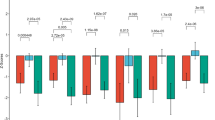Conclusion
The evidence indicates that learning-disabled children show pervasive and enduring language problems across a wide variety of language tasks. The studies suggest that the problems experienced by learning and reading-disabled children may fall into the categories of phonology, syntax, semantics, and pragmatics as well as nonverbal communication. In terms of nonverbal communication, these children are less accurate in interpreting nonverbal auditory and visual cues. In phonology, it appears that they are less skilled in detecting the segments of single words and thus have difficulty establishing phoneme to grapheme correspondence. In the area of syntax, learning-disabled males are less skilled in dealing with inflection and the comprehension and creation of complex sentences. In semantics, they are less adequate than nondisabled children in defining words, creating sentences, and classifying objects into categories. They show less adequate sentence production, are less skilled at recognizing their errors, and are significantly slower in generating verbal responses. Finally, there is one study that suggests that learning-disabled children may be discriminated by their use of language in social situations.
Similar content being viewed by others
References
Bryan, J. and Perlmutter, B. (In preparation). Adult judgments of learning disabled children.
Bryan, J. and Perlmutter, B. (In preparation). Children’s judgments of learning disabled children.
Bryan, T. 1974. Peer popularity of learning disabled children.J. of Learn. Disab. 261–268.
Bryan, T. 1976. Peer popularity of learning disabled children: A replication.J. of Learn. Disab. 9:307–311.
Bryan, T. 1978. Verbal interactions and social relationships of learning disabled children.J. of Learning. Disab.
Bryan, T.H. and Bryan, J.H. 1978.Understanding Learning Disabilities, 2nd ed. Sherman Oaks, Calif.: Alfred Publishing Company.
Bryan, T. and Pflaum, S.W. 1978. Social, linguistic and cognitive analyses of children’s dyadic interactions. Paper presented at the International Conference of the Association for Children with Learning Disabilities, Kansas City, Missouri.
Bryan, T., Wheeler, R., Felcan, J., and Henek, T. 1976. Come on dummy: An observational study of children’s communications.J. of Learn. Disab. 9:661–669.
Denckla, M. B. 1974. Naming of pictured objects by dyslexic and non-dyslexic “MBD” children. Paper presented at the Academy of Aphasia.
Denckla, M.B. and Rudel, R. 1976a. Naming of object drawings by dyslexic and other learning disabled children.Brain and Language 3:1–16.
Denckla, M.B. and Rudel, R. 1976b. Rapid “automatized” naming (R.A.N.): Dyslexia differentiated from other learning disabilities.Neuropsychologia 14:471–479.j
Entwisle, D.R. 1975. Socialization of language behavior and educability.In M. Maehr and W. Stallings (eds.).Culture, Child and School. Monterey, California: Brooks/Cole Publishing Co.
Fry, M.A., Johnson, C.S., and Muehl, S. 1970. Oral language production in relation to reading achievement among select second graders.In D. J. Bakker and P. Satz (eds.).Specific Reading Disability. Netherlands: Rotterdam University Press.
Goldstein, D., Kosteski, D., Hasher, L., and Edelman, K.M. 1978. Automatic memory processing in learning-disabled children. Paper presented at the International Conference of the Association for Children with Learning Disabilities, Kansas City, Missouri.
Lee, L. 1974.Developmental Sentence Analysis. Evanston, Illinois: Northwestern University Press.
Liberman, I.Y., Shankweiler, D., Liberman, A.M., Fowler, C., and Fischer, F.W. 1976. Phonetic segmentation and recoding in the beginning reader.In A. S. Reber and D. Scarborough (eds.).Reading: Theory and Practice. Hillsdale, New Jersey: Erlbaum.
Mattingly, I.G. 1972. Reading, the linguistic process, and linguistic awareness.In J.F. Kavanagh and I.G. Mattingly (eds.).Language by Ear and by Eye: The Relationships Between Speech and Reading. Cambridge, Massachusetts: M.I.T. Press.
Naidoo, S. 1972.Specific Dyslexia. New York: Wiley and Sons.
Perfetti, C.A. and Hogaboam, T. 1975. The relationship between single word decoding and reading comprehension skill.J. of Educ. Psychol. 67: 461–469.
Posner, M.I. and Snyder, C.R.R. 1975. Attention and cognitive control.In R.L. Solso (ed.).Information Processing and Cognition: The Loyola Symposium. Hillsdale, New Jersey: Erlbaum.
Rosenthal, R., Hall, J.A., DiMatteo, M.R., Archer, D., and Rogers, P.L. 1977. Measuring sensitivity to nonverbal communication. Unpublished monograph. Harvard, University.
Shankweiler, D. and Liberman, A.M. 1972. Misreading: A search for causes.In J.F. Kavanagh and I.G. Mattingly (eds.).Language by Ear and by Eye: The Relationships Between Speech and Reading. Cambridge, Massachusetts: M.I.T. Press.
Shatz, M. and Gelman, R. 1973. The development of communication skills: Modifications in the speech of young children as a function of the listener.Monographs of the Soc. for Research in Child Dev. 38(5):1–36
Torgesen, J. and Goldman, T. 1977. Verbal rehearsal and short-term memory in reading-disabled children.Child Development 48:56–60.
Vellutino, F.R. 1977. Alternative conceptualizations of dyslexia: Evidence in support of a verbal-deficit hypothesis.Harvard Educ. Rev. 47:334–354.
Vogel, S.A. 1977. Morphological ability in normal and dyslexic children.J. of Learn. Disab. 10:35–43.
Wepman, J. 1960.Auditory Discrimination Test. Chicago: Language Research Associates.
Wiig, E.H. and Harris, S.P. 1974. Perception and interpretation of nonverbally expressed emotions by adolescents with learning disabilities.Perceptual and Motor Skills 38:239–245.
Wiig, E.H. and Semel, E.M. 1975. Productive language abilities in learning disabled adolescents.J. of Learn. Disab. 8:578–586.
Wiig, E.H. and Semel, E.M. 1976.Language Disabilities in Children and Adolescents. Columbus, Ohio: Charles E. Merrill Publishing Company.
Ziven, G. 1977. On becoming subtle: Age and social rank changes in the use of facial gesture.Child Development 48:1314–1321.
Author information
Authors and Affiliations
Rights and permissions
About this article
Cite this article
Bryan, T.H. Communication competence in reading and learning disabilities. Bulletin of the Orton Society 29, 172–188 (1979). https://doi.org/10.1007/BF02653741
Issue Date:
DOI: https://doi.org/10.1007/BF02653741




